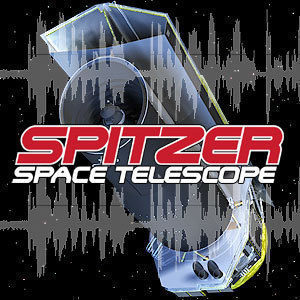Episodes
Published 06/01/10
Something appears to be pushing around a large clump of material that is in orbit of this star, and it's moving fast enough to make a difference in observations along a five month period.
Published 06/01/10
From recent discoveries made by two of NASA's Great Observatories comes new insight into how stars are created. Large nebula's scattered all around our galaxy, act as incubators for newborn stars to ignite and grow.
Published 02/05/10
At the center of our Milky Way galaxy is an area previously unseen by astronomers. Shrouded by clouds of swirling dusts and gases, before now our astronomers could only guess at what might lie behind this thick veil.
Published 09/04/09
It's life, Jim, but not as we know it! Well, at least the building blocks of life. A new study from NASA's Spitzer Space Telescope hints that planets around stars cooler than our sun might possess a different mix of potentially life-forming chemicals.
Published 04/07/09
Talk about hot flashes! A planet that heats up to extreme temperatures in a matter of hours before quickly cooling back down.
Published 01/28/09
The new record-holder for dimmest known star-like object in the universe goes to twin brown dwarfs, each of which shines feebly with only one millionth the light of our sun.
Published 12/12/08
The star Epsilon Eridani is even stranger than fiction. NASA's Spitzer Space Telescope has shown it has two asteroid belts.
Published 11/13/08
Water is being blasted to pieces by a young star's laser-like jets, according to new observations from NASA's Spitzer Space Telescope. The discovery provides a better understanding of how water -- an essential ingredient for life as we know it -- is processed in emerging solar systems.
Published 09/18/08
NASA's Spitzer Space Telescope continues to surprise astronomers. On its fifth anniversary, we recap some of this Great Observatory's biggest discoveries.
Published 08/25/08
A contender for the title of brightest star in our Milky Way galaxy has been unearthed in the dusty metropolis of the galaxy's center.
Published 07/15/08
As a result of a new Spitzer Space Telescope study, two of our own Milky Way Galaxy's spiral arms have gone away.
Published 06/13/08
Spitzer isn't the only infrared mission. Infrared images from another of NASA's robotic missions help us understand mysterious features on the surface of Mars.
Published 05/23/08
Diamonds may be rare on Earth, but surprisingly common in space -- and new research shows that the infrared eyes of NASA's Spitzer Space Telescope are perfect for finding them.
Published 03/24/08
Terrestrial planets might form around many, if not most, of the nearby sun-like stars in our galaxy. These new results suggest that worlds with potential for life might be more common than we thought.
Published 02/25/08
Young city dwellers on Earth aren't the only ones rushing to suburbia to start families. New observations from NASA's Spitzer Space Telescope suggest that galaxies also prefer to breed stars in the cosmic suburbs.
Published 02/04/08
New observations from NASA's Spitzer Space Telescope suggest that moons like Earth's -- that formed out of tremendous collisions -- are uncommon in the universe, arising at most in only 5 to 10 percent of planetary systems.
Published 12/19/07
A big galaxy, spotted stealing gas from a passing galaxy about half its size, was caught red-handed by the Spitzer Space Telescope.
Published 10/22/07
The dust that makes everything around us -- and even ourselves -- may have come from black holes.
Published 10/09/07
An infant Earth may be forming in a star system over 400 light-years away, according to new results from the Spitzer Space Telescope.
Published 10/03/07
A recent detection of neon gas in planet-forming disks may help us better understand how planets form and whether or not life may exist elsewhere in the cosmos.
Published 09/12/07
Spitzer learns why one class of galaxy seems to have trouble forming new stars.
Published 08/16/07
New results from the Spitzer Space Telescope hint that other solar systems may be even more exotic than we've ever imagined.
Published 08/10/07
Astronomers have studied two very intriguing planets beyond our solar system -- one super hot, one super windy. This podcast comes from NASA's Jet Propulsion Laboratory.
Published 05/14/07
Once thought to be the stuff of science fiction, double sunsets may be much more common in the universe than previously believed. Dr. David Trilling discusses the Spitzer Space Telescope's recent results.
Published 03/29/07


